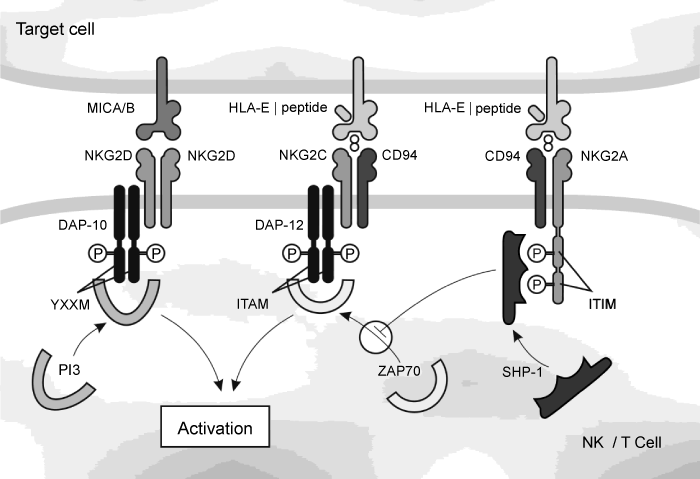
 |
| Figure 1: Schematic representation of the interaction between HLA-E and MIC molecules with their NKG2 receptors. Activating and inhibitory signal transduction and regulation in NK or CTL (cytotoxic T lymphocyte) cells. The CD94/NKG2C activating receptor’s interaction with peptidepresenting HLA-E molecule leads to binding of adapter molecule DAP-12 containing immunoreceptor tyrosine-based activation motifs (ITAM), which in turn interact with ZAP70 protein, triggering the signal cascade resulting in NK or CTL cell activation. The CD94/NKG2A inhibitory receptor interaction with peptide-presenting HLA-E molecule results in phosphorylation of NKG2A immunoreceptor tyrosine-based inhibition motifs (ITIM), leading to recruitment of SHP-1 protein, which causes dephosphorylation of ZAP70 protein, preventing its ability to bind ITAM domains, thus restraining the activatory pathway. The NKG2D activating receptor’s interaction with MICA/B molecule leads to binding of adapter molecule DAP-10 containing YXXM motifs, which in turn interact with PI3 kinase (PI3K), sending signals resulting in immune cell activation. |